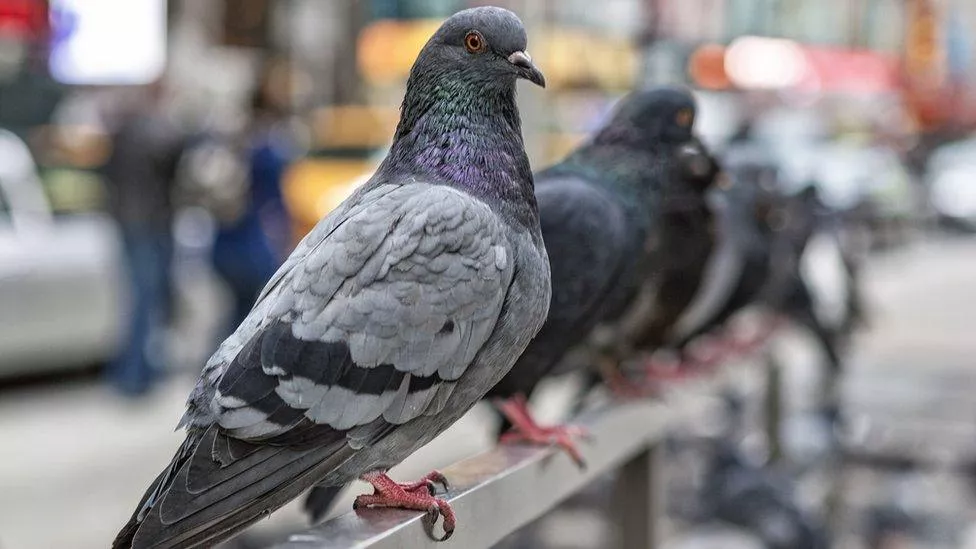In most cities, pigeons have become part of the urban landscape. They gather around public spaces, rooftops, balconies, and open food areas. Their presence feels ordinary, almost invisible, until the health effects begin to surface.
What many people do not realize is that these birds are not just messy. They carry risks that travel silently through the air. This risk builds slowly. It starts with a little dust. Then it enters the lungs. And then it begins to affect the body in ways that are difficult to reverse.
When people feed pigeons out of habit or belief, they may be increasing the population in that area. This creates a ripple effect. More birds mean more droppings. More droppings mean more exposure. Over time, this pattern starts affecting people who live nearby.
The Problem Begins With Airborne Particles
When pigeon droppings dry, they become powdery. This powder contains fine particles, fungal spores, and proteins. These get picked up by wind or movement. They settle on surfaces, clothing, food, or go directly into the air people breathe. They do not need to be visible to be harmful.
For someone with healthy lungs, the result might be a mild cough or an allergic reaction. For someone with asthma, the risk is greater. For people with low immunity, the risk can lead to serious infections. These are the hidden threats people often overlook.
Infections That Travel Through Air
One of the most serious conditions linked to pigeons is a lung disease called pigeon-breeder’s lung. This happens after repeated exposure to pigeon droppings or feathers. It causes the lungs to become inflamed. If left untreated, this inflammation becomes long term. In severe cases, it may lead to permanent scarring. That condition is called pulmonary fibrosis. It cannot be reversed.
There are also fungal infections that grow in bird droppings. One is called histoplasmosis. The other is cryptococcosis. Both begin in the lungs. Both can travel to other parts of the body. Cryptococcosis can even affect the brain. These infections may start with mild symptoms. Over time, they may become life-threatening, especially for people with low immunity.
Diseases caused by pigeons are rarely understood by the general public. They are often misdiagnosed as seasonal flu or pollution-related allergies. Without proper testing, the source of the illness goes unnoticed. That is what makes these diseases dangerous.
Feeding Pigeons Does More Harm Than Good
Feeding pigeons is often done out of compassion. But the outcome is usually the opposite of what is intended. It leads to a growing flock of birds. More birds mean more droppings and more airborne risks. It also brings other pests into the area. Rats, flies, and insects begin to gather where food and bird waste are found together.
This makes diseases spread through the air faster. The surrounding area becomes harder to clean, shared spaces become unsanitary, and the odor [from the droppings] becomes stronger. The health risk increases not just for those who feed the birds, but for the entire community around them.
Who Is Most at Risk?
Children are naturally curious. They touch railings, floors, and toys without thinking. If these are contaminated, they absorb the risk quickly. Older adults already face lower lung capacity. Pigeon exposure may aggravate existing breathing problems. People with weak immune systems face the highest risk. For them, a single infection can become serious within days.
In homes where pigeons are allowed to roost, the risk increases even more. Balcony ledges, window grills, rooftops, and shaded structures attract them. Cleaning these areas often releases more particles into the air. Without precautions, exposure becomes part of daily life.
Preventive Steps That Can Help
You do not need to change the structure of your home to stay safe. You only need to be alert. Here are practical steps that help:
- Use wet mops instead of dry sweeping to clean droppings
- Wear gloves and N95 masks during any clean-up
- Do not let pigeons nest or roost on your building
- Install nets, spikes, or bird barriers on ledges
- Wash your hands thoroughly after handling bird-affected surfaces
- Avoid feeding pigeons in residential or commercial areas
These steps do not just reduce your risk. They protect your family, your neighbors, and your community.
The Importance of Medical Attention
If you are coughing for weeks, or you feel breathless without clear reason, get a medical check. These may be early signs of lung disease caused by pigeons. Many people delay the visit. They assume the issue is pollution, climate, or fatigue. But the longer the delay, the harder the treatment becomes.
A qualified physician will help with the first round of tests. If the signs suggest deeper problems, they will refer you to a pulmonologist. That is how serious diseases are caught early. That is how recovery becomes faster and less expensive.
Conclusion
Pigeons may seem harmless. However, they bring a wide range of health risks that are often invisible. From diseases spread through the air to infections that affect the brain, the dangers build slowly and silently.
People can overcome these limitations by choosing not to feed pigeons, keeping living areas clean, and seeking early medical assistance. Aster Hospital [known for its expertise in respiratory care and infectious diseases] offers complete support through its team of experienced general physicians and pulmonologists in India. The physicians at Aster Hospital understand these risks and treat them effectively.






